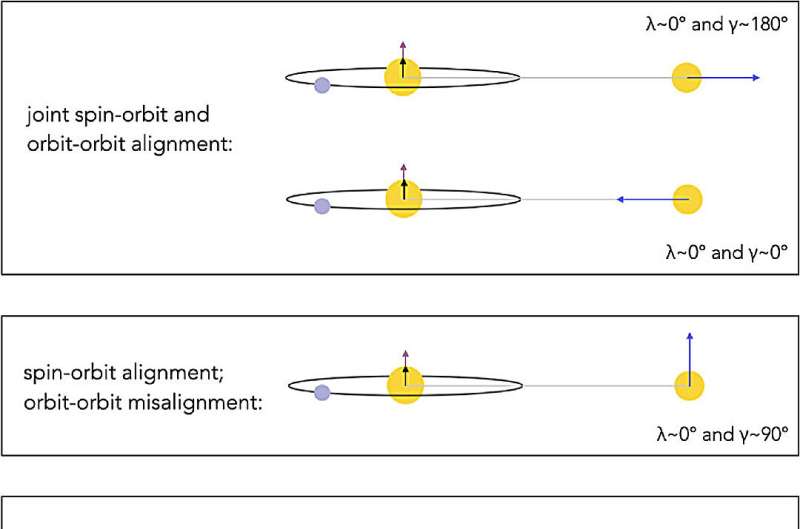A new beginning: Astronomers search for more temperate 'Tatooines'

Star Wars protagonist Luke Skywalker's childhood might have been slightly less harsh if he'd grown up on a more temperate Tatooine鈥攍ike the ones identified in a new study.
According to the study's authors, there are more climate-friendly planets in binary star systems鈥攊n other words, those with two suns鈥攖han previously known. And, they say, it may be a sign that, at least in some ways, the universe leans in the direction of orderly alignment rather than chaotic misalignment.
For the study, the researchers looked at planets in binary star systems鈥攕ystems where individual planets orbit around a host star, with a second star located nearby that orbits the whole system. (The fictional desert planet Tatooine, from the "Star Wars" films, is in a binary star system.)
"We show, for the first time, that there is an unexpected pile-up of systems where everything is aligned," said Malena Rice, an assistant professor of astronomy in the Yale Faculty of Arts and Sciences and lead author of the new study, which was in The Astronomical Journal. "The planets orbit precisely in the same direction that the first star rotates, and the second star orbits that system on the same plane as the planets."
Rice's team used a variety of sources, including the Gaia DR3 catalog of high-precision stellar astrometry, the NASA Exoplanet Archive's Planetary Systems Composite Parameters table, and the TEPCat catalog of exoplanet spin-orbit angle measurements, to create 3D geometries of planets in binary star systems.
The researchers found that nine of the 40 systems they studied had "perfect" alignment.
"It could be an indication that planetary systems like to push toward an orderly configuration," Rice said. "This is also good news for life forming in those systems. Stellar companions that are aligned differently can wreak havoc on planetary systems, toppling them over or flash-heating planets over time."
How would the world look on a more temperate Tatooine?
During some seasons of the year, it would be daytime continuously, with one star lighting up one side of the planet while the other star was lighting the other half of the planet. But that sunlight would not always be blazing hot because one of the stars would be much farther away.
In other seasons of the year, both suns would light up the same side of the planet, with one sun appearing much larger than the other.
Rice will give a presentation on the study in March at the in New Zealand.
More information: Malena Rice et al, The Orbital Geometries and Stellar Obliquities of Exoplanet-hosting Multistar Systems, The Astronomical Journal (2024).
Provided by Yale University



















